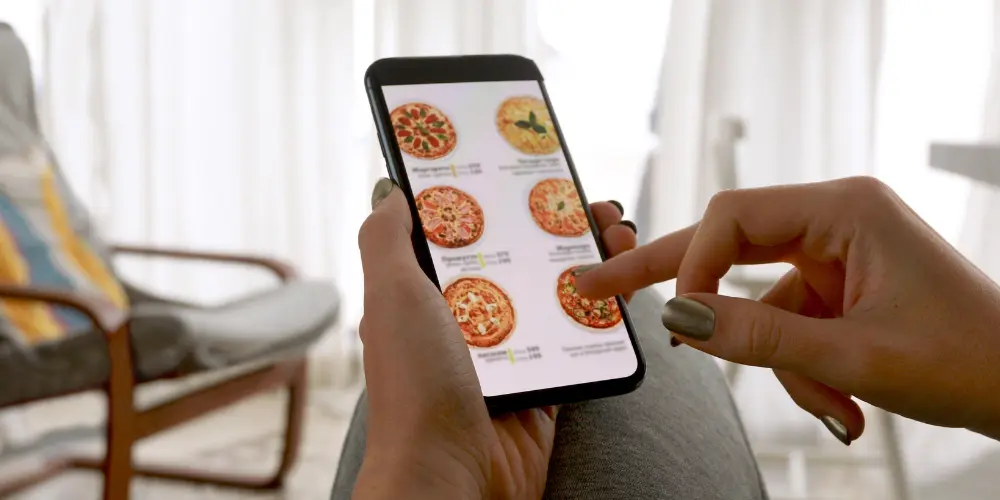Prioritising inclusive dining as part of your restaurant’s strategy isn’t just important in terms of complying to national and local guidelines. It’s also a power move.
Firstly, by creating an inclusive environment, you can ensure that all guests, including those with disabilities, can enjoy their dining experience without any obstacles. This in turn, doesn’t only widen your general outreach, but also helps you stand out from your competition. But above all, prioritising access to all confidently asserts your values and principals as a business, which will certainly translate to increased customer loyalty and client diversification in the long run. And who doesn’t want that?
So how can you ensure that your restaurant never falls short at welcoming and accommodating guests with disabilities? Follow the quick guide below and become a local hot spot for all.
Remove or minimise physical barriers

One of the most obvious challenges for guests with disabilities are physical barriers. Not only can it create discomfort for your diners, discouraging them from visiting your restaurant again, more importantly it can be a dangerous hazard for them, as well as for the other guests and staff. To ensure that your restaurant is physically accessible, start by reviewing the following amenities.
Easily accessible entrances and exits: ensure that there is at least one accessible entrance that is wide enough for wheelchairs and equipped with a ramp or level access. Automatic doors are an added benefit.
Restrooms: Spacious restrooms with grab bars and an emergency alarm are a must. Consider the placement of sinks and hand dryers at heights accessible to wheelchair users.
Seating: Review your floor map and adjust to provide a variety of seating options, including leaving extra space to accommodate wheelchairs. Don’t forget to leave plenty of space between tables to allow easy movement.
Parking: Allocate designated accessible parking spots close to the entrance. Ensure these spaces are well-marked and clear of all obstacles.
Adjust to different senses
Inclusive dining isn’t just about providing space to people with disabilities, it’s about creating the most comfortable and safeguarded dining experience too. That’s why converting into a sensory-friendly environment is a must, especially for guests with sensory processing disorders, autism, and other similar conditions.
Mind the light: Opt for natural lighting when possible or use adjustable lighting to prevent harsh glares or overly bright lights.
Control noise levels: Consider implementing noise-reducing materials, like carpets or acoustic panels, to lower overall noise levels. Offering quiet zones or private dining rooms can also provide a more comfortable experience for those sensitive to noise.
Soft and hard skill staff training
The next crucial factor to consider is your employees. The training of your front-end staff should incorporate not only the more traditional elements, but also soft skills such as awareness and communication training. By helping your staff embody the values of inclusive dining, you will be able to truly connect with the customers, regardless of their limitations and abilities and turning a mere restaurant promotion into an active strategy where all elements have been thought of.
Awareness training: Train your staff on how to interact with guests with disabilities, including the importance of using respectful language and being patient. It’s also crucial to broaden their understanding of different types of disabilities, visible or invisible.
Prep for emergencies: Ensure that staff know how to assist guests with disabilities in case of an emergency. This might include familiarising themselves with evacuation procedures for guests who use wheelchairs or those with sensory sensitivities.
Communication: Teach staff to communicate clearly and effectively. For example, when serving a guest who is deaf or hard of hearing, speaking clearly, facing them directly, and being patient with communication as to balance the thin line between being unhelpful or appearing demeaning.
Expand inclusivity with technology

With technology rapidly expanding across the restaurant industry, there are many tips and tricks on how you can utilise even existing tools to further enhance your establishment’s accessibility. These can not only help guests during their outing, but even help prepare ahead of time.
Accessible websites: Go over your restaurant’s website to ensure that it’s fully accessible, with features like screen reader compatibility, alt text for images, and easy navigation. This helps guests with disabilities make reservations or explore your menu in advance.
Assistive devices: Consider investing in assistive technologies such as hearing loops for guests with hearing aids or tablet-based menus that can be adjusted for font size and contrast for people with visual impairment.
Online reservations: Incorporate a robust online reservation system, to allow guests to specify any accessibility needs in advance. This will not only help you arrange their seating better, but also alert your staff to ensure that nothing is left up to chance.
Advance orders: Providing an option to order in advance or offering assistance with menu navigation can be helpful. This will not only make it easier for guests to make their choices without feeling under pressure, but also eliminate the unnecessary waiting time on a busy night.
Reach out to your community
Positioning your restaurant as a ‘venue accessible to all’ requires careful planning, execution and… consistent feedback. At the end of the day, you are only as successful at creating the culture of inclusive dining, as the customer’s consider you to be. So don’t shy away from asking them for feedback and taking the opportunity to learn more about their pain points.
Feedback forms: Actively seek feedback from guests with disabilities on their dining experience. Set up automated email feedback prompts with Tableo and regularly review the responses you are receiving.
Learn from partnerships: By partnering with disability advocacy groups you can review whether your restaurant meets accessibility standards, and find impactful ways to exceed them. These partnerships can also provide training resources and help you stay updated on best practices.
Great food accessible to everyone

Providing inclusive dining isn’t just about meeting the legal requirements, so turn it into a powerful statement about how your restaurant views and incorporates the values of inclusivity and diversity. After all, great food should be accessible to everyone and we, here at Tableo, are here to help.
Download Tableo’s free version to see just how much difference an online reservation system can make. From removing the uncomfortable conversations with having to voice out their specific needs, to helping staff prepare ahead of time for extra comfort, to receiving feedback all in one centralised system – let’s start building inclusive dining as an industry standard, not exception

Unlock the tips that will help you stand out from the crowd and get more bookings!

Learn how to save time, reduce stress and fill your restaurant while you sleep!

Stephanie Paris
Gen-Z marketing coordinator bringing fresh energy to web and graphic design, with a weekend habit of chasing adventure.

Stephanie Paris
Gen-Z marketing coordinator bringing fresh energy to web and graphic design, with a weekend habit of chasing adventure.









